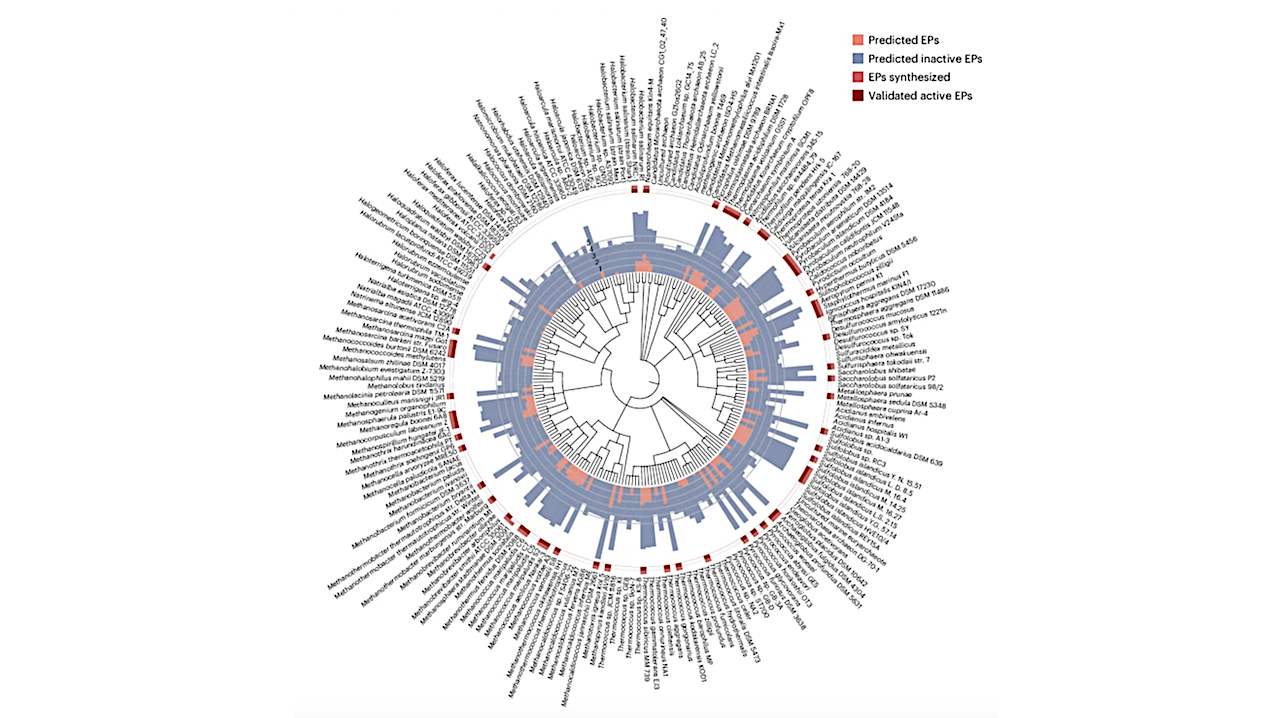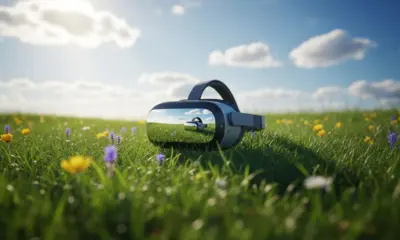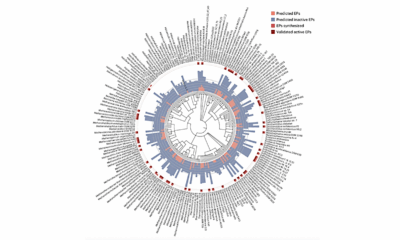Science
AI Unveils New Antibiotics from Ancient Archaea Microbes

Groundbreaking research from the University of Pennsylvania has identified new antibiotic compounds derived from ancient microbes known as Archaea. Published in Nature Microbiology, this study employs artificial intelligence to uncover previously unknown substances that could combat the increasing threat of antibiotic resistance.
Researchers utilized AI to analyze the proteins of hundreds of Archaea species, which have thrived in extreme environments such as boiling acid and deep-sea vents for billions of years. According to César de la Fuente, a leading professor in bioengineering and the study’s senior author, past antibiotic research has primarily focused on fungi, bacteria, and animal sources. This new approach marks a significant shift in the search for effective antibiotics.
Exploring Archaea: A New Frontier in Antibiotic Discovery
Archaea represent a distinct branch of life, separate from both bacteria and eukaryotes, which include plants and animals. While they share visual similarities with bacteria, Archaea differ fundamentally in their genetics and biochemistry. These unique characteristics allow them to endure extreme conditions, which has led researchers to believe they may possess novel defenses against microbial competitors.
Research associate Marcelo Torres, a co-first author of the study, emphasized the potential of Archaea, stating, “If they’ve survived for billions of years under those conditions, maybe they’ve developed unique ways to fight off microbial competitors.” This exploration of Archaea could lead to the discovery of new antibiotics that operate differently from current treatments.
To identify antimicrobial compounds, the team utilized an updated version of their artificial intelligence tool, APEX. This AI was initially designed to identify antibiotic candidates in ancient biological samples, including the proteins of extinct organisms. By training APEX on a dataset of known antimicrobial peptides, the researchers prepared it to predict which peptides in Archaea could inhibit bacterial growth.
The scrutiny of 233 Archaea species yielded over 12,000 potential antibiotic candidates, labeled “archaeasins.” Chemical analysis indicated that these archaeasins differ from known antimicrobial peptides, particularly in their distribution of electric charge. The researchers then selected 80 archaeasins for further testing against various bacteria.
Promising Results Against Drug-Resistant Bacteria
Antibiotics operate through various mechanisms, from disrupting bacterial membranes to inhibiting protein synthesis. The archaeasins demonstrated unique characteristics; unlike most known antimicrobial peptides that attack a bacterium’s outer defenses, archaeasins appear to disrupt cellular function from within. In tests against multiple drug-resistant bacteria, 93% of the 80 archaeasins exhibited antimicrobial activity against at least one bacterium.
Further studies involved testing three selected archaeasins in animal models. Remarkably, four days after a single dose, all three compounds successfully halted the spread of a drug-resistant bacterium commonly acquired in hospital settings. One archaeasin showed effectiveness comparable to polymyxin B, a last-resort antibiotic used against drug-resistant infections.
“This research shows that there are potentially many antibiotics waiting to be discovered in Archaea,” noted de la Fuente. As antibiotic resistance becomes an increasingly critical issue globally, finding new sources of antibiotics is essential to replace those losing efficacy.
Future research aims to enhance APEX to predict antibiotic candidates based on structural characteristics, potentially improving the tool’s accuracy. Researchers also seek to understand the long-term efficacy and safety of archaeasins with the goal of advancing them to human clinical trials.
“This is only the beginning,” de la Fuente stated. “Archaea is one of the oldest forms of life, and clearly has much to teach us about how to outsmart the pathogens we face today.”
The study received support from various organizations, including the Procter & Gamble Company, United Therapeutics, the National Institute of General Medical Sciences, and the Defense Threat Reduction Agency. As research continues, the hope remains that these ancient microbes will provide the key to overcoming one of modern medicine’s most pressing challenges.
-

 Technology4 weeks ago
Technology4 weeks agoDiscover the Top 10 Calorie Counting Apps of 2025
-

 Lifestyle1 month ago
Lifestyle1 month agoBelton Family Reunites After Daughter Survives Hill Country Floods
-

 Education1 month ago
Education1 month agoWinter Park School’s Grade Drops to C, Parents Express Concerns
-

 Technology2 weeks ago
Technology2 weeks agoDiscover How to Reverse Image Search Using ChatGPT Effortlessly
-

 Technology3 weeks ago
Technology3 weeks agoHarmonic Launches AI Chatbot App to Transform Mathematical Reasoning
-

 Technology1 month ago
Technology1 month agoMeta Initiates $60B AI Data Center Expansion, Starting in Ohio
-

 Lifestyle1 month ago
Lifestyle1 month agoNew Restaurants Transform Minneapolis Dining Scene with Music and Flavor
-

 Technology1 month ago
Technology1 month agoByteDance Ventures into Mixed Reality with New Headset Development
-

 Technology4 weeks ago
Technology4 weeks agoMathieu van der Poel Withdraws from Tour de France Due to Pneumonia
-

 Technology1 month ago
Technology1 month agoRecovering a Suspended TikTok Account: A Step-by-Step Guide
-

 Technology1 month ago
Technology1 month agoGlobal Market for Air Quality Technologies to Hit $419 Billion by 2033
-

 Health1 month ago
Health1 month agoSudden Vision Loss: Warning Signs of Stroke and Dietary Solutions



















